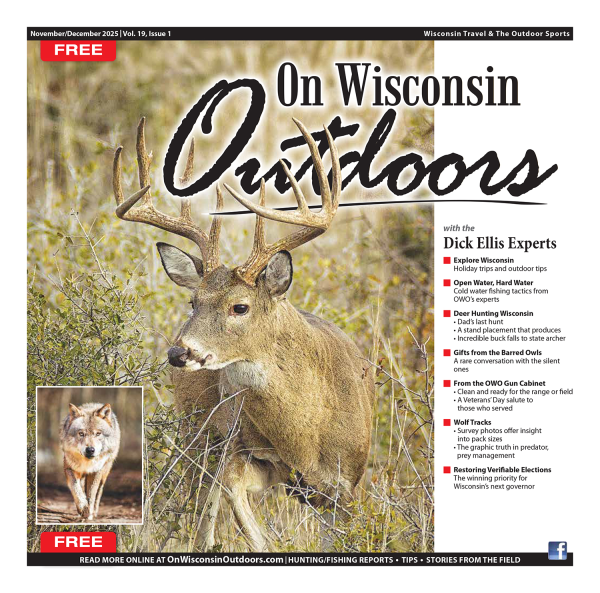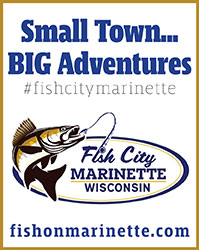Trumpeter swan success continues 25 years after program started
Nesting pairs at 10 times recovery goal, last annual monitoring season begins
MADISON -- Twenty-five years after efforts began to restore trumpeter swans to Wisconsin's landscape, state wildlife officials are celebrating a record number of nesting pairs as annual monitoring surveys of the birds begin.
"The good news is great news," says Sumner Matteson, the Department of Natural Resources biologist who has led the program since it started in 1987. "We had 197 nesting pairs in 2011 -- the highest number we've had to date. That's about 10 times the recovery goal we set in the 1980s, and it's extremely gratifying and a reflection of the partnerships that made it possible. We hope that this field season we'll set another new record."
DNR, with help from partners and volunteers, conducts several surveys to keep tabs on the swans, including aerial surveys to identify nests and confirm the hatching of cygnets. Those aerial surveys will begin shortly, followed by surveys done by biologists to check nests to see if the eggs are viable, and fall surveys in which biologists and volunteers round up cygnets and put numbered bands on their necks to help keep track of them in coming years.
After the 2012 field season ends, DNR will continue to monitor the birds but not every year. "We’ve been monitoring the flock every year statewide every year since 1989. We've come to a fork in the road where we no longer need to monitor annually so the next survey will be five years from now."
Market hunting and demand for the feathers of trumpeter swans brought these birds, one of North America's largest, to near-extinction in Wisconsin and other upper Midwest states by the 1880s.
Wisconsin put the species on the state's endangered species list in the 1980s, which made it illegal to kill, transport, possess, process or sell them, and launched a recovery effort that collected eggs from the wilds of Alaska, hatched them at the Milwaukee Zoo, and reared the young in the wild using decoys, and in captivity, before releasing them.
Scores of organizations, businesses and private individuals worked to carry out the recovery effort with state wildlife managers, technicians, research scientists, University of Wisconsin-Madison wildlife ecologists, and the U.S. Fish & Wildlife Service staff. Two of the partners, Mary and Terry Kohler of Sheboygan were honored April 25 at the state Natural Resources Board meeting in Madison for their role in helping transport from Alaska the eggs used in the recovery program, and for their financial and other help.
The Natural Resources Foundation of Wisconsin helped secure much needed funding, and the Endangered Resources Fund and the bird's protected status under the endangered species law both significantly aided outreach efforts, Matteson says.
Trumpeter swans reached the recovery goal early -- more than doubling the 20 breeding pairs hoped for by 2000 --and Wisconsin removed it from the endangered species list in 2009. Trumpeter swan nests are now found in 24 Wisconsin counties.
Becky Abel, who designed the decoy-rearing technique as a UW-graduate student and is now associate director of The Trumpeter Swan Society, says Wisconsin's program has been wildly successful and has played an important role nationally.
The interior population is now growing at an impressive rate and may have the fewest hazards of any of the populations at this time, she says. "The Wisconsin birds are a critical piece of that because they have established migratory traditions."
The decoy-reared Wisconsin birds pioneered and started new patterns of migration, which was important because the birds had been extirpated, so those traditions had been lost. Wisconsin birds taught other birds those migratory patterns, and now we are seeing more birds migrating out of Wisconsin than any other state, Abel says.
She credits DNR for being willing to try decoy rearing, an approach that was modeled off of other species' re-introductions, but which had not yet been tried with trumpeter swans.
"There was a lot of criticism for that early on, but the technique proved to be really great in combination with other approaches and as a result, the Wisconsin program now is held up as a flagship program. That is something the state can be proud of -- being willing to take those chances for better returns."
Matteson says the program's success has been tremendously satisfying.
"In the early years of the program we had some slow going," he says. "But what this program demonstrated over 25 years is to really adhere to a vision and not to give upon a goal but to persist in working with partners and the public in making a project of this magnitude happen."
More information and a video update on the trumpeter swan recovery are found on DNR's year-long web series, Celebrating 40 years of protecting Wisconsin's natural heritage. Go to dnr.wi.gov and search for ER 40.











